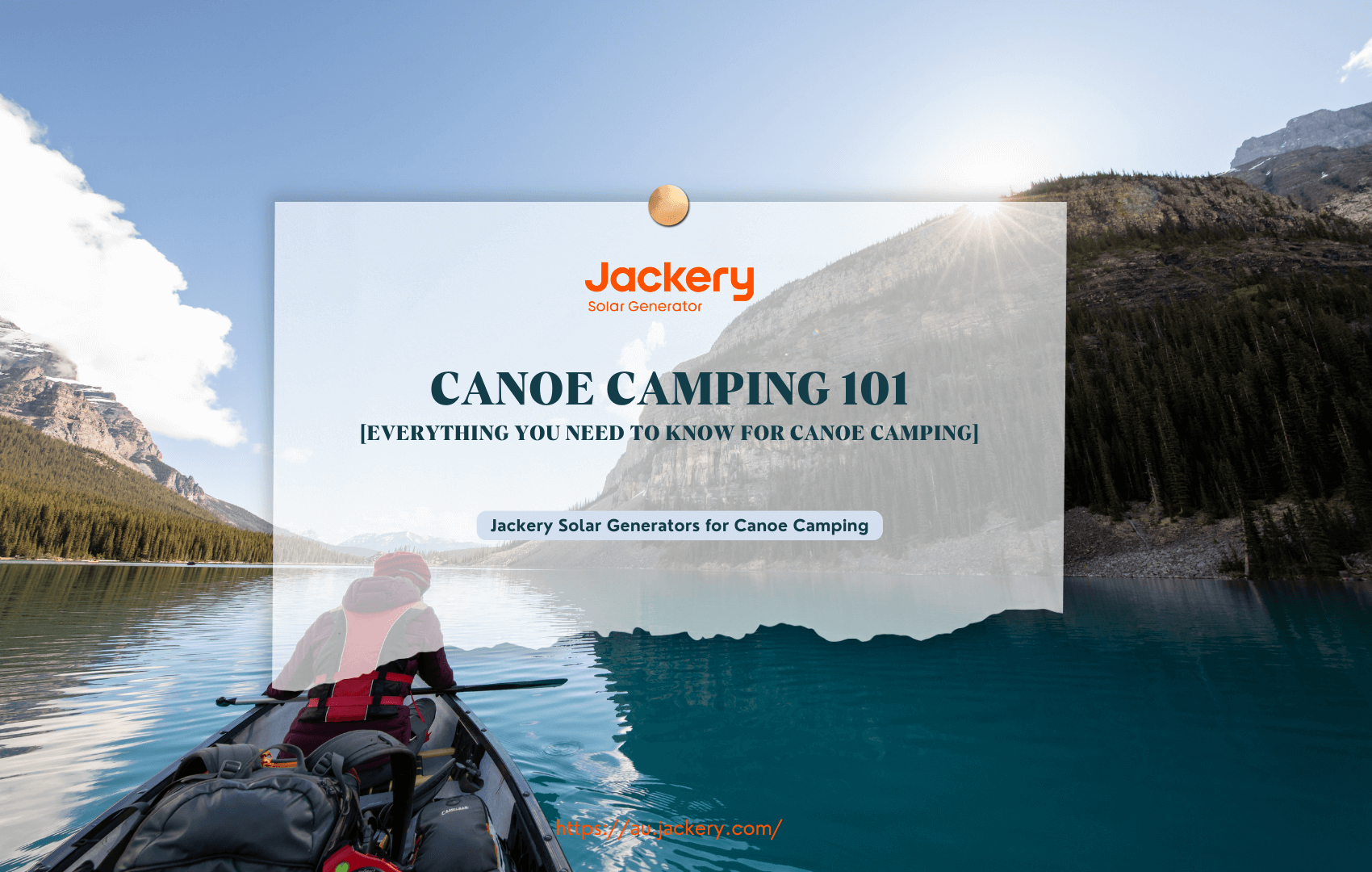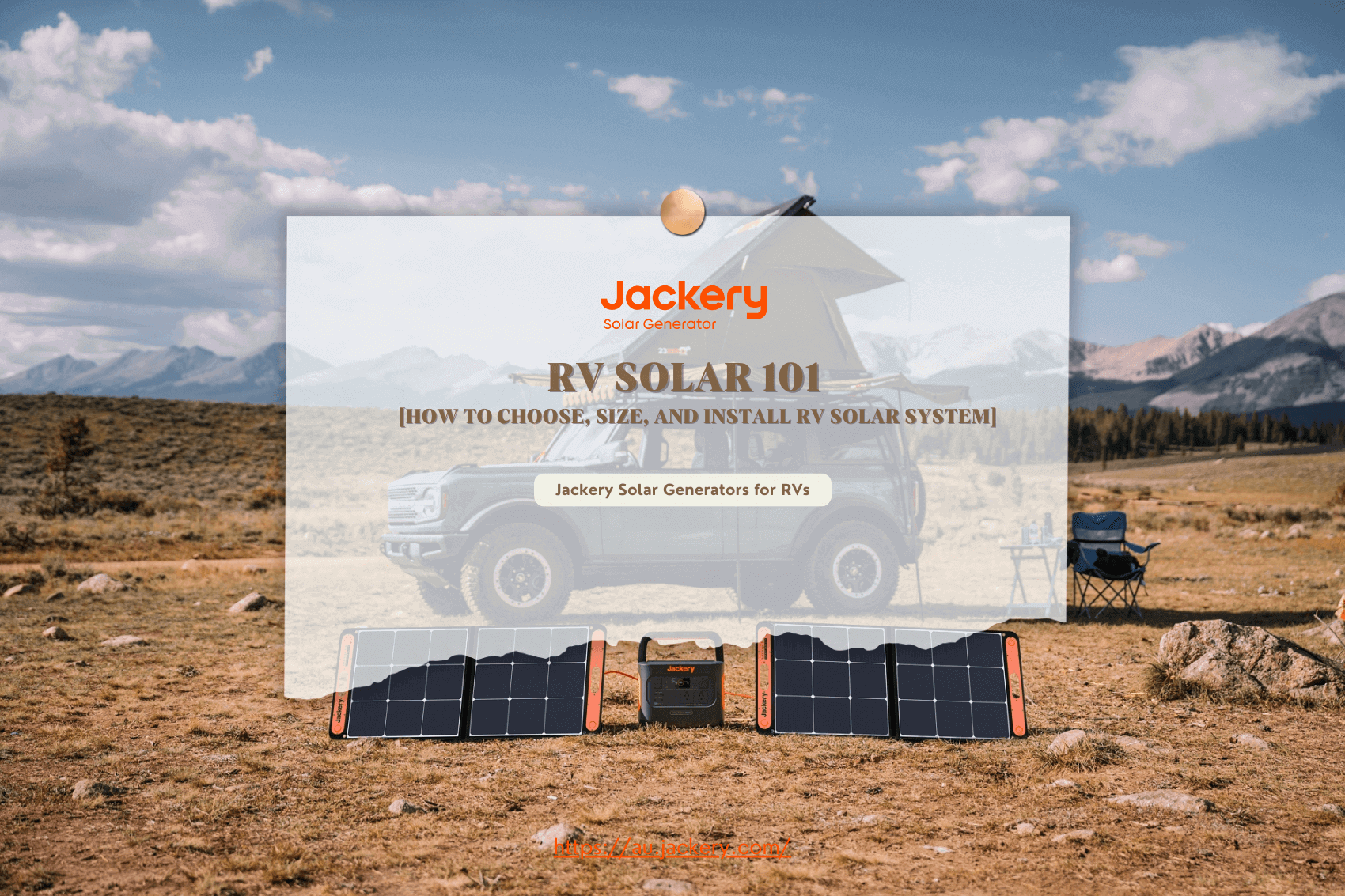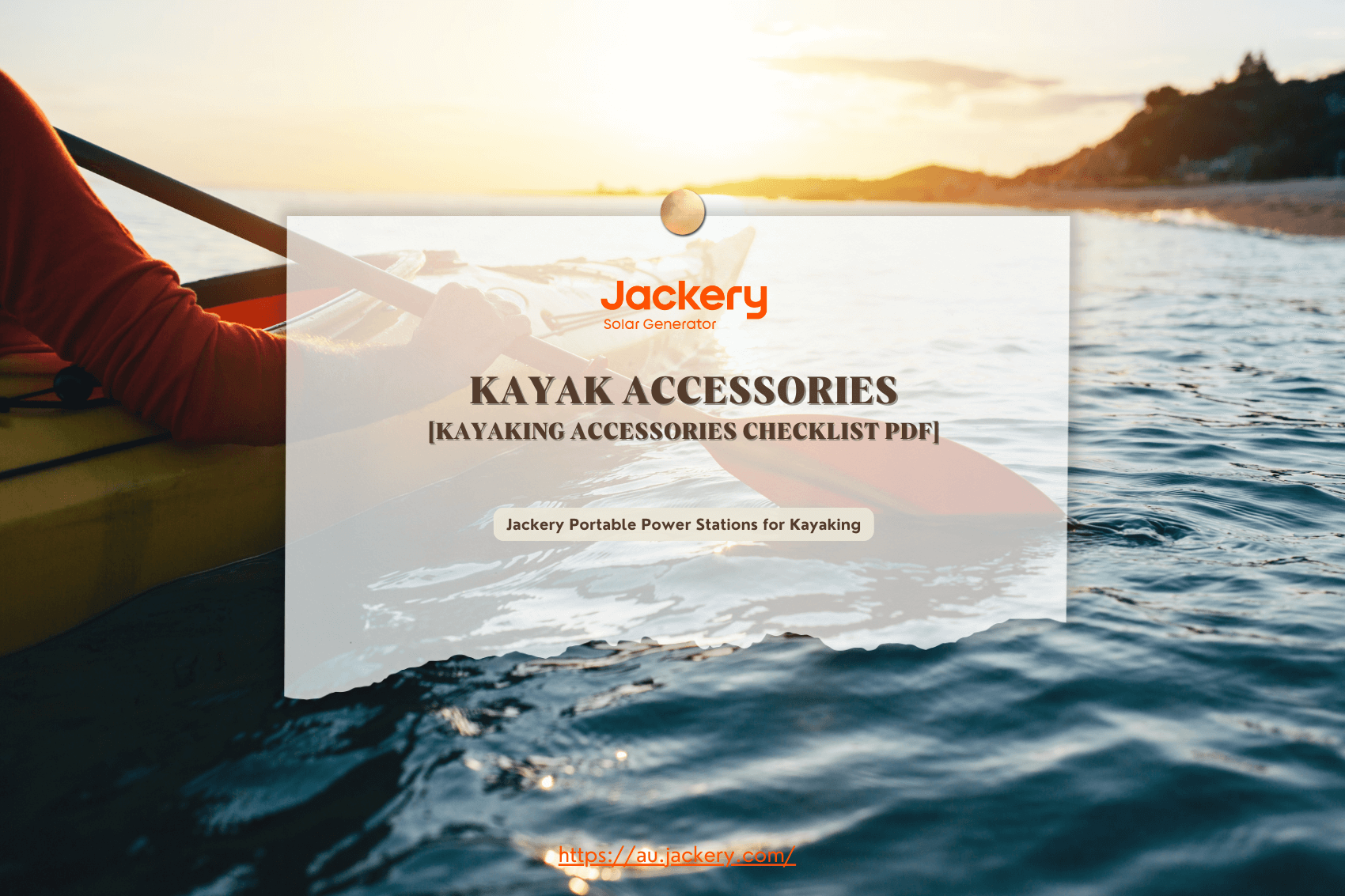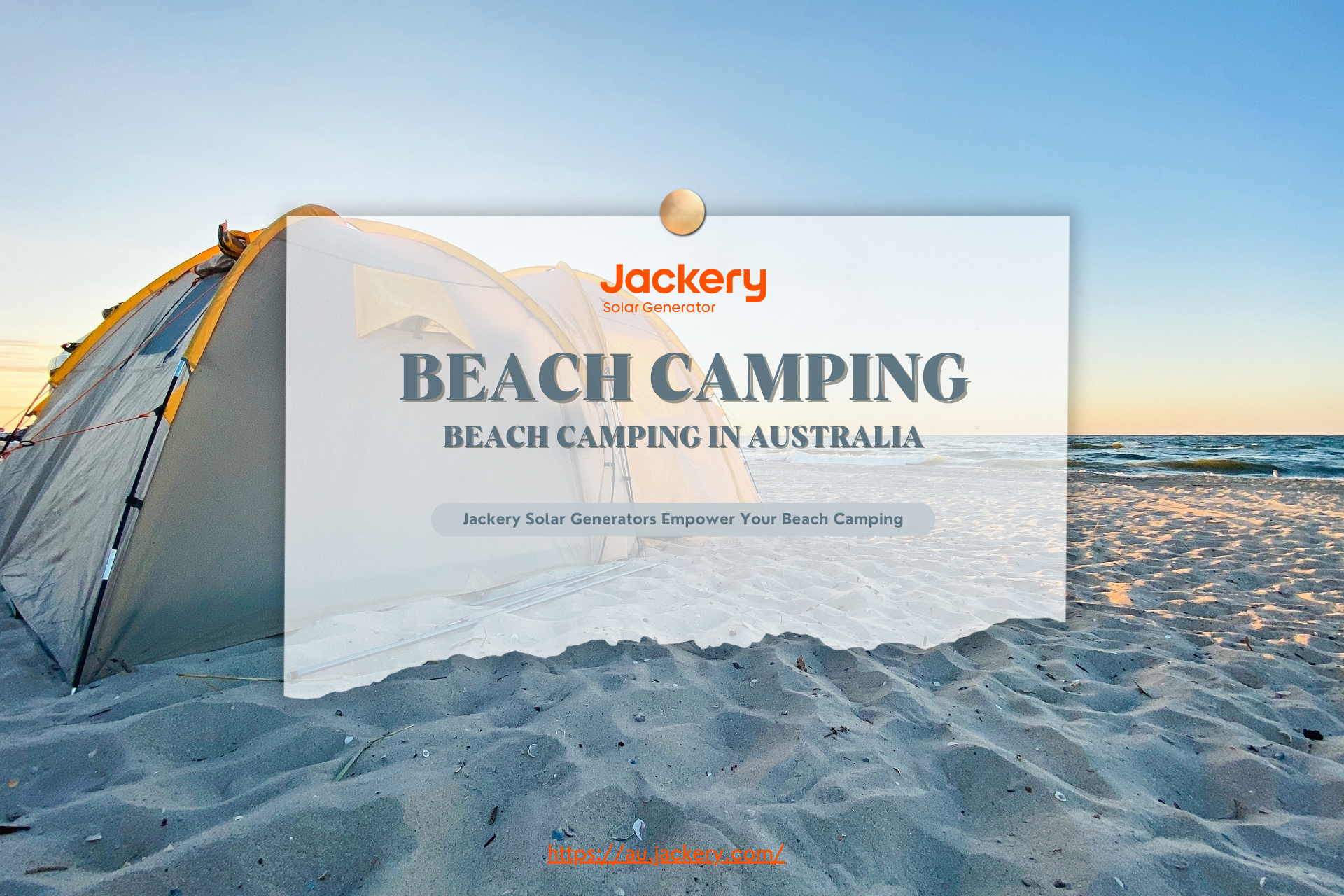|
Key Takeaways: |
|
• Canoe camping is a camping trip that lasts more than one day and uses a canoe as its primary way of transportation. • Canoe camping allows people to gain more freedom and see more scenery. However, it is more suitable for teams of two or more people in emergencies. • When preparing for canoe camping, you should know what you need, choose destinations and routes, select a canoe, practice paddling, and pack your gear. • We highly recommend Jackery Solar Generator 1000 Pro or 500 for canoe camping, especially overnight camping. • We also list some tips for the first-timers on canoeing and camp. |
What Is The Canoe Camping?
Canoe camping is a camping trip that lasts more than one day and uses a canoe as its primary way of transportation. Canoe camping on lakes and rivers across the country is popular because it mixes independence, challenge, and exploration.
People who like to canoe camp pack their canoes with everything they need for their trip. Canoe camping is much like hiking for regular campers, but you go to a different place. You'll put everything you'll need for the camping trip on your canoe, like food and safety gear.
During the day, you can fish and canoe on lakes, rivers, or the shore. At night, you can sleep out under the stars. When you go on a canoe camping trip, you usually go on multi-day trips along planned river and waterway routes to fish, camp, hike, and do other fun things.
What Are The Pros & Cons of Canoe Camping?
Everything has two sides, and canoe camping is no different. Then you should weigh the pros and cons and choose based on your needs. Here are some good and bad things about canoe camping.
The following are the pros of canoe camping:
- Canoe camping allows people to gain more freedom and see more scenery.
- It can reach places that hikers or vehicles cannot go, providing you with enough challenges and adventures to break the monotonous routine of life.
- You can also exercise while enjoying the relaxation of camping.
- Canoe camping can allow experiencers to relieve anxiety and release stress.
- Canoe camping also allows people to learn more skills, such as canoeing, tent setting, etc.
However, there are still some disadvantages and challenges for canoe camping:
- Canoe camping suits teams or two or more people in emergencies.
- Canoe camping is subject to weather conditions. If it rains, you have to wait until the rain stops before proceeding.
- It is easy to encounter dangers and emergencies during canoe camping, endangering personal safety.
- Canoe camping is usually in wet areas. The human body is easily damaged by moisture.
- The canoe is giant. Carrying the canoe with you for the entire activity is very inconvenient.
How to Prepare & Plan for Canoe Camping?
Many things must be done beforehand for someone who has never been canoe camping. Get ready for canoe camping with these items.

Step 1: Get to Know Canoe Camping
Find out ahead of time if you meet the standards for canoe camping, such as being in good physical shape. It would be best to learn how to set up a tent, paddle a canoe, and so on for canoe camping. Details about the weather, like the direction and strength of the winds. How to Canoe Camp in the Water. Also, it would be best to learn as much as possible about waves, currents, and currents.
For a beginner, it's best to go to a place close and well-known. It would also be great if the place had tools to help with camping. For easy entry, most people who have never canoe camped before are told to choose a national or provincial park. Or, pick a lake or pond close by to camp at.
Once you know where to go, you can start planning your trip. First, track how many kilometres were paddled and how long the trip was each day. For someone new to canoe camping, the average speed is about 3.5 kilometres per hour, and the daily paddle time is about 4 to 5 hours.
After that, you'll know how long the trip is. For first-timers, it's best to do it for one to three nights. It's also essential to pick a place with lots of camping. Finally, choose the best way based on all of the above factors.
Step 2: Choose A Canoe
You can pick a canoe with one or two seats. It would help if you got a two-seater canoe to adventure with a friend, your kids, or your dog. A canoe with two seats, on the other hand, lets you take more gear. However, its extra length can make it harder to store and move.
Solo canoes are easy to move around, but they only have a little space for gear. But most of the time, they are less expensive and easy to drive. Besides this, you can pick from different kinds of canoes, such as recreational, river, and multi-purpose ones.
Recreational Canoes: Canoes are great for fun and relaxation and for paddling on flat water. They are great for bird watching, photography, fishing, and general swimming because they are stable, easy to control, and hard to flip over. It's hard to move them around because they are so stable.
River Canoes: River canoes are made for paddlers who love the task of going through rapids and navigating rivers. They can handle being hit and worn down, and their high sides keep splashes from getting inside. A lot of rocker (curvature from end to end) makes turning easier.
Multi-Purpose Canoes: These kinds of canoes are made to handle both calm lakes and fast-moving rivers. They are generally easier to move around and can hold more people than leisure canoes. There are high-volume "tripping" canoes in this group that are made to handle long trips with lots of gear.
Step 3: Practice Paddling
The most essential skill you need to be able to canoe is how to paddle. The right way to paddle will help you deal with fast-moving water, bad weather, and rough water. It will also help you handle dangerous situations when you're under a lot of stress.
Put the canoe through its paces on calm water for a few days before taking it on a trip. To improve your canoe paddling skills, learn how to move safely inside the canoe and practice front and back paddling positions with a buddy, if you have one. Every canoe camper must know how to swim to save energy and have fun on the water.
Step 4: Canoe Camping Gear
Due to its larger size, canoe camping gear is easy to pack. However, things tend to get wet when travelling by water because it is near water. That carry-on bag needs to stay dry before you can use it. Also, be careful to bring only a few things to keep light. Here are a few of the most important things.
|
Canoe Camping Gear Checklist |
|||
|
Canoe |
Spare Paddle |
Headlamp |
GPS |
|
Life Jacket |
Map |
Dry Bags |
Tent |
|
Sleeping Pad |
Pillow |
Drinking Water |
Food |
|
Cooking Equipment |
Trash Bags |
Rain Gear |
Hiking Boots |
|
Clothes |
Sunscreen |
Camera |
First Aid Kit |
|
PFD |
Personal Toiletries |
Electronics |
Jackery Solar Generator |
A dry bag is a bag that keeps things dry. They come in different sizes, from 5 to 50 litres (with backpack straps for the bigger ones). It can store things that need to stay dry, like food, clothes, safety gear, and more.

A solar generator is one of the things you need to go camping outside. There is only a little power in the wild, but we need cell phones, other electronics, and gadgets to communicate and find our way. Like the Jackery Solar Generator, this kind of solar generator turns sunlight into electricity that our devices can use. At the same time, it can also make it possible to cook outside.
Jackery Solar Generators for Canoe Camping
Jackery Solar Generators have high efficiency and high capacity. They can charge devices faster and store more power for emergencies. All Jackery Solar Generators are portable, so you can take your solar generator wherever you go, whether you plan to go canoe camping or RVing.
The Jackery Solar Generator combines Jackery Solar Panels with a Portable Power Station. The product features a high-quality lithium battery, a pure sine wave inverter, and an MPPT charge controller. These components provide a reliable and uninterrupted power source for outdoor equipment and personal electronics when camping in a canoe.
|
Phone |
Power Needed |
Working Hours |
|
|
Jackery Solar Generator 1000 Pro |
Jackery Solar Generator 500 |
||
|
Phone |
5W (5V⎓1A) |
170.34H |
88.06H |
|
Camera |
85W (24V⎓3.6A) |
10.02H |
5.12H |
|
GoPro |
10W (5V⎓2A) |
85.17H |
44H |
|
GPS Device |
6.6W (3.3V⎓2A) |
129H |
66.7H |
|
Flashlight |
10W (5V⎓2A) |
85.17H |
44H |
|
Portable Cooler |
360W (120V⎓3A) |
2.4H |
1.2H |
Jackery Solar Generator 1000 Pro
The Jackery Solar Generator 1000 Pro is more than just a gadget—it's your ticket to steady power on the go, thanks to its vast 1002Wh capacity and 1000W output power. It can easily hold a full wall charge in just 1.8 hours and has been charged a thousand times. This is a game-changer for people seeking efficient and environmentally friendly energy options.
Include two SolarSaga 80W solar panels to increase the energy you generate by 25%. This is a cost-effective and sustainable option for trips outside or backup power for your home.
To make things easier for you, the Jackery Explorer 1000 Pro portable power station has a handle that can be folded up for easy storage and travel. This makes it the perfect thing to take with you on your outdoor adventures. This small power source promises to keep you fired up with its impressive 1,000-charge cycle life and lightweight design.
It also has two 100W PD connectors and two USB-C ports, which let you charge devices like computers, smartphones, and iPads quickly and reliably. The MPPT technology guarantees that sun charging will work 99% of the time.

Jackery Solar Generator 500
How do you charge your electronics during canoe camping? How will you charge your phones, keep the temperature of your coolers, and cook outside? The situation can be promptly resolved using a Jackery Solar Generator 500. The SolarSaga 80W or 100W solar panels are used with the Explorer 500 portable power station to convert sunlight into electricity.
The Jackery Explorer 500 is an easy-to-use and portable power supply that can charge a wide range of equipment for long periods, from low-power to high-power. The power station's substantial 518Wh battery capacity, ability to be easily carried, foldable handle, lower noise level (46dB, comparable to a human whisper), lightweight (6.4 kg), and cutting-edge BMS technology make it well-suited for automotive applications.
The Jackery Explorer 500 contains three USB-A connectors, two DC ports, one AC outlet, and a carport to charge your electronics, such as your phone, GPS device, camera, PS4, and more. For example, it can charge a phone for 44 hours, providing enough power to navigate the route.

Canoe Camping Tips
Canoe camping is an adventure sport in the end. So, if you want to be ready, you need to pay extra attention to some things that are likely to go wrong, especially safety.
Here are some things that people who have never been canoe camping before should remember.
- Wear Appropriate Attire
You bring the right gear and clothes for the weather, like a jacket, thermal layers, a hat, and gloves. Wear warmer clothes in the morning and evening to keep your body temperature from dropping, which can make you sick. If it's pretty hot outside, wear a raincoat or waterproof jacket over your warm clothes to keep them from getting wet.
- Check the Weather Forecast
Before you go canoe camping, check the weather predictions to see what the weather will be like. No canoe camping will happen if it rains. Plans will have to be moved to another time. If it's hot and the sun is shining, the best times to paddle are in the morning and evening.
- Get a Campsite Permit
You should also check if the place you want to visit needs a reservation or a pass. Most places need you to have a campground pass or be registered. You can get a ticket before planning your route if the place you want to go needs one.
But this is only sometimes the case. For example, places like parks need plans for specific campsites. In this case, you must plan your route before booking your trip.
- Try Not Alone
You shouldn't go by yourself; you should go with someone else. When you're new to canoe camping, it's not safe to do this activity by yourself.
So try to go with a group or someone who has done canoe camping before. If you want to do something yourself, you should always contact family or friends and tell them where you are and how safe you feel.
- Stay Safe
When you're on the water, make sure your PFD fits right. Stick a zip-top bag under your seat to keep maps, directions, route information, camping permits, and other papers dry and easy to get to.
Use Velcro straps or elastic to keep an extra paddle close at hand. If you're not used to rowing, consider wearing bike gloves to keep your hands from getting blisters and knee pads if you have to kneel. Finally, ensure your canoe has a bowline that can tie it down and pull it up.
- How to Canoe Tips
The forward paddle may look like the easiest move in paddling, but it can take years to get good at it. These easy-to-follow steps will help you learn the most essential part of paddling.
- Kneel or sit in the canoe with your back to the water and your front looking forward at the bow or stern. Sit or kneel in the middle if you're paddling by yourself.
- Put your inside hand on the paddle and your water-side hand two to three feet below, where it feels best, with your fingers facing out.
- Put the paddle's blade into the water, at least two feet in front of you or as far forward as you can go without throwing your body forward.
- Move your bottom hand back and push your top hand forward to move the blade through the water. Make sure the paddle handles are below your eye level.
- Turn your shoulder around to pull the blade back straight. Do not go with the canoe's turn.
- Pull the blade back through the water up to your hip.
- Take the blade out of the water and turn it to align it to the water. This is especially important when it is windy. This will move the blade forward to the starting position.
- If you paddle forward on the left side, the boat will move to the right. When you push forward on the right, the canoe's front will move to the left.
- To straighten your canoe's path, use the stopping method. Step 8 doesn't work at all with this. The front of your canoe will move to the left if you back paddle on the left side. The front of your ship will move to the right if you back paddle on the right side.
Top Canoe Camping Destinations in Australia
Australia has so many great places to canoe camping that it's embarrassing. The coastline is about 34,000 km long, the rivers are easy for beginners, and the rapids are world-class for thrill-seekers. Here are Australia's three most popular places to camp by canoe.

(Image Source: iStock)
1. Ningaloo Reef, Western Australia
Location: 1 Robinson St, Coral Bay, WA 6701, Australia (Open in Google Maps)
Contact Number: 08 9942 5934
Website: Ningaloo Reef
When to Visit: April to October
From April to October, whale sharks can be seen at Ningaloo Reef, but there's more to see than just the main draw. The Ningaloo Reef is much more accessible for kayakers and snorkelers than the Great Barrier Reef. The reef's edge provides a lagoon with calm, clear water.
Paddlers with sharp eyes might see dolphins, dugongs, and turtles coming to the surface, but a snorkel is better for exploring the coral gardens full of rays, reef sharks, and rainbow fish.
2. Murray River, Victoria
Location: 2500 km from the Snowy Mountains in New South Wales (Open in Google Maps)
Contact Number: 1800 994 620
Website: Murray River
When to Visit: Late winter and spring
The largest river in Australia is 2,500 km long, from its source to the sea. It takes several months to paddle at the entire length, but many sections are suitable for shorter paddles. Backwaters and branches connect to the main channel. From towns like Albury and Renmark, day trips to these are easy to arrange.
Once the current water levels drop, the winter will be a great time to explore the Murray. There will be fewer boats and jet skis on the water, and it will be easier to get on the water to catch them as the sun comes later. The river's glassy surface will be covered in a beautiful blanket of mist.
3. Katherine River, Northern Territory
Location: Northern Territory, Australia (Open in Google Maps)
Contact Number: +61 (0)8 8999 6302
Website: Katherine River
When to Visit: March to November
Many campers have pulled their canoes over the difficult portages, leaving plastic marks on the rocks in Nitmiluk Gorge. But further downstream, the river opens up, making for a more relaxing paddle.
Late in the dry season, when there isn't much water, birds and animals gather along the riverbanks. A canoe is the best way to get close to these animals without disturbing the peace. More dangerous animals are in the water, so it's best to go with a guide who knows the area and the alligators.
Canoe Camping FAQs
The following are the frequently asked questions about the canoe camping in Australia:
- 1. What is canoe camping called?
Canoe camping, also called touring, tripping, or adventure canoeing, is a mix of camping and canoeing. canoe campers usually bring enough gear to get around and camp in a canoe for several days.
- 2. Is it safe to sleep in a canoe?
This will stabilise the canoe while you sleep, but you should always wear your PFD when on the water. You won't even notice it once you are under the Milky Way. Set up camp on land, even if you'll sleep in your canoe all night.
- 3. Is it safe to go canoe camping alone?
To stay safe, follow all the rules and plan your trip correctly. You can look at the material that was already mentioned. Always wear a life jacket and a wetsuit, bring safety gear, and ensure all your safety and communication gear is dry and working.
To stay safe, you need a compact solar generator like the Jackery Solar Generator 1000 Pro or 500 to charge your phones, GPS, navigation devices, and other electronics. But if you have never done it before, you should go on a trip like this with someone who has done it before. You can go to more places and take more trips if you know much about this area.
Final Thoughts
Going canoe camping is fun because it lets you connect with nature. But the most important thing is to keep yourself safe. It's essential to make a balanced shopping list ahead of time and stick to it. Adding a Jackery Solar Generator to your gear lets you charge outside items.


























































